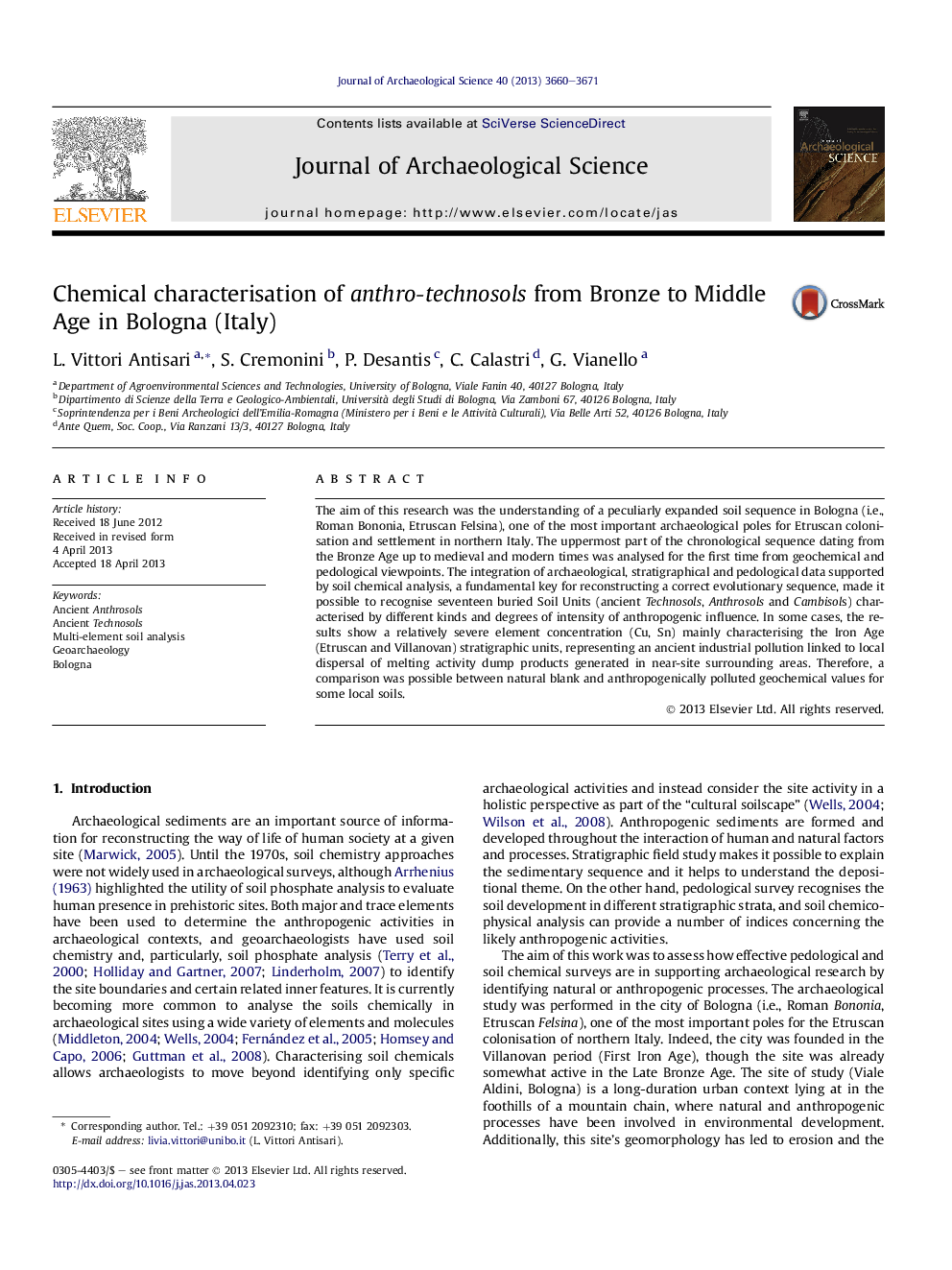| Article ID | Journal | Published Year | Pages | File Type |
|---|---|---|---|---|
| 10498906 | Journal of Archaeological Science | 2013 | 12 Pages |
Abstract
The aim of this research was the understanding of a peculiarly expanded soil sequence in Bologna (i.e., Roman Bononia, Etruscan Felsina), one of the most important archaeological poles for Etruscan colonisation and settlement in northern Italy. The uppermost part of the chronological sequence dating from the Bronze Age up to medieval and modern times was analysed for the first time from geochemical and pedological viewpoints. The integration of archaeological, stratigraphical and pedological data supported by soil chemical analysis, a fundamental key for reconstructing a correct evolutionary sequence, made it possible to recognise seventeen buried Soil Units (ancient Technosols, Anthrosols and Cambisols) characterised by different kinds and degrees of intensity of anthropogenic influence. In some cases, the results show a relatively severe element concentration (Cu, Sn) mainly characterising the Iron Age (Etruscan and Villanovan) stratigraphic units, representing an ancient industrial pollution linked to local dispersal of melting activity dump products generated in near-site surrounding areas. Therefore, a comparison was possible between natural blank and anthropogenically polluted geochemical values for some local soils.
Related Topics
Physical Sciences and Engineering
Materials Science
Materials Science (General)
Authors
L. Vittori Antisari, S. Cremonini, P. Desantis, C. Calastri, G. Vianello,
